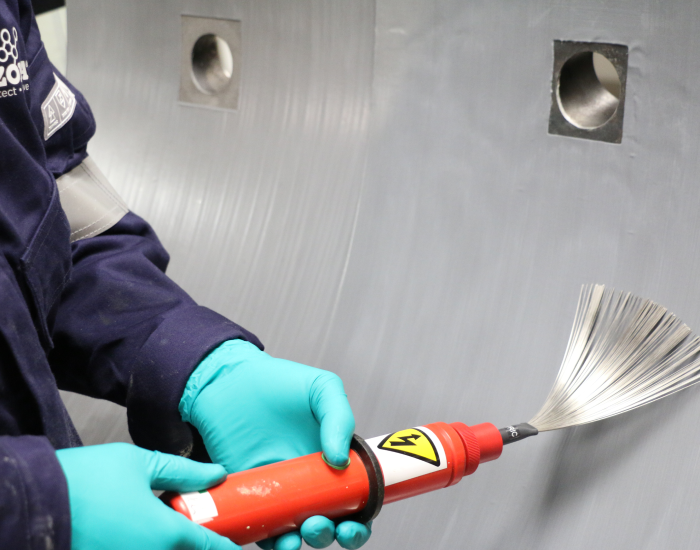- A holiday test is an inspection method used to detect discontinuities in painted/coated surfaces using specialized tools and equipment. These tools, called holiday detectors, are portable devices that are swept across the coated surface.
- Holidays tests work on the concept of electrical conductivity. Metal substrates are excellent conductors of electricity, and therefore allow current to flow through them. On the other hand, many coatings are poor conductors of electricity and resist the flow of electricity. Using this principle, holiday tests use instruments to locate flaws in anticorrosive paints and coatings.



- During holiday testing, a ground wire and probing electrode are attached to the same power source. The ground wire is clamped to the specimen being tested while the probe is swept across the surface of the metal substrate. If the probe comes into contact with a coating discontinuity, the exposed metal completes the electrical circuit between the electrode and the grounding wire, resulting in a flow of electricity. This electricity shows up on an indicator, alerting the equipment operator of the defect.
- While holiday tests are effective, they do possess limitations. Because these tests depend on the coating being non-conductive, they are not effective on conductive metallic coatings, such as zinc-rich primers.
- A holiday test is also known as a continuity test.
- The technique detects but does not discriminate between corrosion on inner or outer surfaces of the pipe.
- This technique provides qualitative not quantitative information on the severity of the corrosion.
- Technique is dependent on formation of ferromagnetic layer for efficient transmission of ultrasound.
- The technique can be used with elevated temperature applications (up to 650 ºC).



